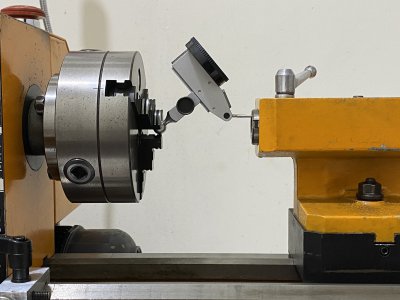I have an Emco Compact 8 bench lathe and I recently found that the live center is 0.03 mm ( slightly more than a thou ) above the spindle while the 3-jaw chuck is 0 ~ 0.02 mm below the spindle depending on the size of the drill shank. I have already tried mounting the drill chuck at different angular positions but the center of the chuck is alway beneath that of the spindle. I believe this is due to the weight of the chuck
This is probably no big issues but if I want to fine tune it by shimming or milling the lower half of the tailstock, should I aim at perfect alignment for the live center or the drill chuck ?
This is probably no big issues but if I want to fine tune it by shimming or milling the lower half of the tailstock, should I aim at perfect alignment for the live center or the drill chuck ?



